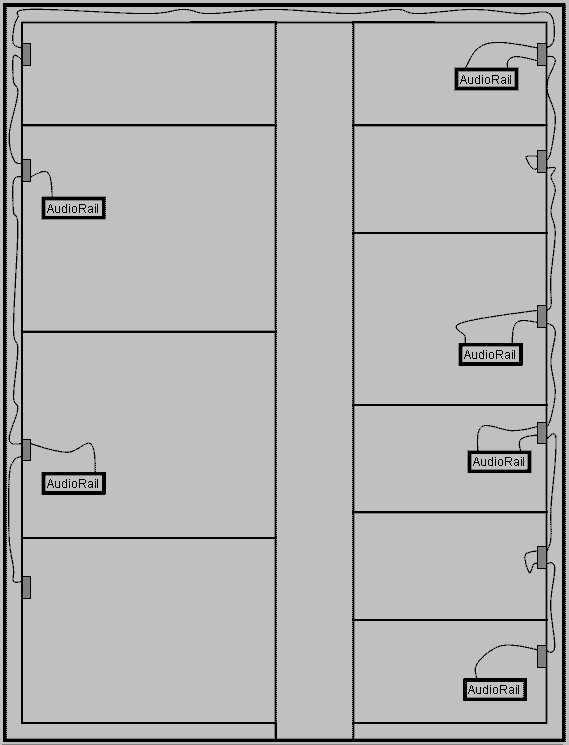
In the above picture a building is wired for AudioRail using standard LAN wiring outlets and cables, and CAT5 cable routed through the walls.
Each outlet has two RJ45 receptacles. Inside the wall, CAT5 cable is daisy chained from outlet to outlet, room to room. Wherever AudioRail enclosures do not exist in a room, a short CAT5 cable must connect between the two receptacles in that room to bridge a desired connection across that room.
Notice in the particular example above, the four AudioRail units on the right side of the building are all connected together, but are not connected to the two AudioRail units on the left side of the building. The two AudioRail units on the left side of the building are connected to each other, but nothing else. So there are two separate AudioRail systems operating in the building. (Note: Even if they were connected, this would not preclude using the front panel switches to make them run separately.)
Notice that the above picture looks like an office building, but it could just as well be a performance facility, replacing traditional analog audio wall outlets distributed around the facility with CAT5 connector outlets.